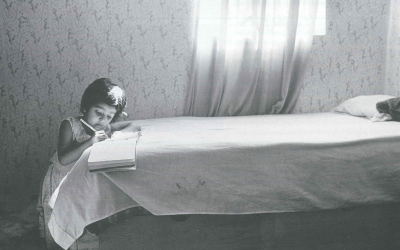Fiestas: Crossing Borders
At the Oruro Carnival, a few hours from La Paz, the heavy-set blue-skirted women swirl past me in a dizzying burst of color and enviable grace. The trumpeters, some with exotically dyed hair, blare not too far behind. I remember that as a young man President Evo Morales had been a trumpeter in this very carnival.
Men with clearly indigenous facial features and exaggerated kinky hair dress as blacks, while overseers “caporales” dance along with wide skirts, exaggerated jewelry and stylized whips. Dancing skeletons—figures of death—are booed and chased off in this enormous celebration of life. The old are young, and the young are old. Women dance men’s steps, and mixed-race Bolivians perform proudly costumed as indigenous people from the jungle. It’s a spectacle, an exuberant explosion of folklore.
The enthusiastic audience this year was mostly Bolivian with a sprinkling of foreigners, including other Latin Americans. They clapped and shouted instructions, sprayed foam at each other, and as the day wore on, enjoyed beer, cotton candy and charquekan. Here, both in the audience and the dancers, well-off Bolivians participated along with poor folk who had saved all year to be able to come.
“It’s the one time of year Bolivians cheer Bolivian identity and are proud to shout ‘Viva Bolivia,’’’ observed Bolivian journalist Raúl Peñaranda. The Oruro Carnival, declared Masterpiece of the Oral and Intangible Heritage of Humanity by UNESCO, is a syncretic religious celebration evolving from European Lenten and indigenous traditions, that honors the Virgin of the Mining Shaft (officially Virgin of the Candelaria). Dancers must perform in at least three Oruro Carnivals to pay their promises to the Virgin, and the all-day celebration ends up in the Temple of the Mining Shaft. This medley of religious expression and lay exuberance turns the world on its head: black and white, fat and thin, male and female, young and old, gay and straight. It is performing nationality, performing life, performing death, crossing borders of time and place and identity.
The carnival went on and on and I stopped taking notes and pictures. I became one with the crowd, cheering and clapping and dancing in place, although I admit to not shooting off any foam. In the late afternoon, we decided to avoid the crowds and set back to La Paz. In the bus station, we noted sounds of an ambulance and police sirens. Returning to the Bolivian capital, we heard that a pedestrian overpass had collapsed, leaving four dead—including three band members—and almost a hundred injured. According to news reports, the fiesta went on. But now the performers walked instead of danced, accompanied by sad and funereal music, up to the church.
I thought of the dancing skeletons and the fragile borders between life and death that Carnival evokes. Not just here in Oruro, but in all the carnivals and fiestas from Rio de Janeiro to New Orleans to Santo Domingo, celebrations become a flashpoint for what is happening in society. Just a few days earlier, I had been in Ayacucho, Peru, as it prepared for its carnival. I’d asked a local sociologist Edilberto Jiménez if carnival had been suspended or diminished during the time of the Shining Path terrorism, which had the Ayacucho countryside as its focal point. “No, on the contrary,” he told me. “The Carnival became a place of resistance, a place where people could get together.”
And so it goes. Fiestas perform life and death and turn the world topsy-turvy. Perhaps this is why so many academics from different fields have written on the subject. On these pages, you will find intriguing stories and analyses of fiestas around Latin America and the Caribbean and beyond. Fiestas are much more than folklore, as traditionally defined, and yet they are the essence of folklore.
But as you read and view the lush photos in this issue, please remember: Enjoy! Fiestas are to celebrate.
Spring 2014, Volume XIII, Number 3
Related Articles
Editor’s Letter: Tourism
Ellen Schneider’s description of Sandinista leader Daniel Ortega in her provocative article on Nicaraguan democracy sent me scurrying to my oversized scrapbooks of newspaper articles. I wanted to show her that rather than being perceived as a caudillo
Editor’s Letter: Flora and Fauna
Ellen Schneider’s description of Sandinista leader Daniel Ortega in her provocative article on Nicaraguan democracy sent me scurrying to my oversized scrapbooks of newspaper articles. I wanted to show her that rather than being perceived as a caudillo
Editor’s Letter: Democracy
Ellen Schneider’s description of Sandinista leader Daniel Ortega in her provocative article on Nicaraguan democracy sent me scurrying to my oversized scrapbooks of newspaper articles. I wanted to show her that rather than being perceived as a caudillo


